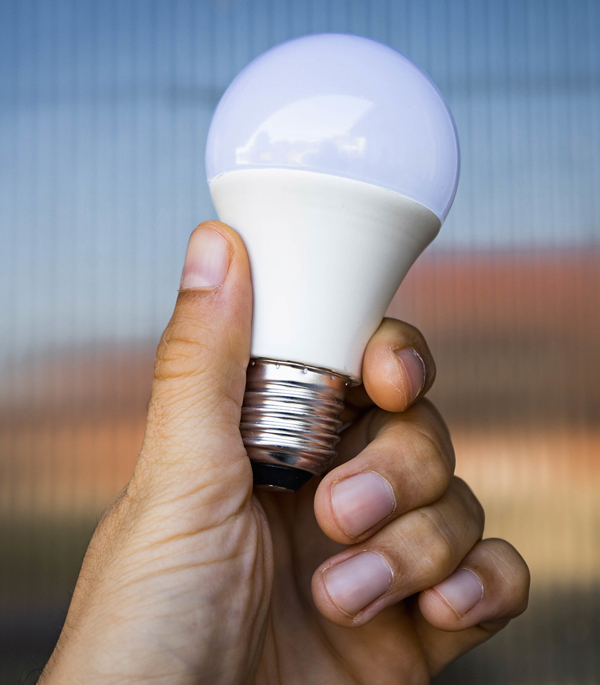#MoveTheDate
1.8
Days
Based on scenarios calculated by Project Drawdown, adoption of universal LED lighting would move the date of Earth Overshoot Day 1.8 days by 2050.
What is the solution?
LEDs (light emitting diodes) are ten-times more energy efficient than traditional light-bulbs for converting electricity to visible light.
This solution improves our resource security in the energy category.
How does it #MoveTheDate?
Lighting accounts for 15% of global energy use. A shift towards the complete adoption of LEDs would significantly reduce the amount of electricity used for lighting, and reduce the need to cool indoor spaces.
How is it scalable?
To date, LEDs have already displaced roughly half the incandescent lights in the world. They may also be able to replace non-electric lighting in remote regions. Regulations in many high-income countries have also helped accelerate the technology shift.
What is the solution?
LEDs (light emitting diodes) are ten-times more energy efficient than traditional light-bulbs for converting electricity to visible light.
This solution improves our resource security in the energy category.
How does it #MoveTheDate?
Lighting accounts for 15% of global energy use. A shift towards the complete adoption of LEDs would significantly reduce the amount of electricity used for lighting, and reduce the need to cool indoor spaces.
How is it scalable?
To date, LEDs have already displaced roughly half the incandescent lights in the world. They may also be able to replace non-electric lighting in remote regions. Regulations in many high-income countries have also helped accelerate the technology shift.

Image credit to Marco Verch Professional Photographer via Flickr
Traditional light bulbs, such as the incandescent ones developed and popularized by Edison in the late 1800s, produce a lot of heat when generating light. But nature knew ways to generate light without heat – such as bioluminescent fireflies. It took humans a bit longer to figure it out. It was only in the 1970s that electroluminescent devices could be produced at a reasonable price. Early on, LEDs were used as displays in pocket calculators, for example. In the 1990s, scientists succeeded in producing bright diodes, opening the commercial path to LEDs.
Here’s a rough efficiency comparison: incandescent lights turn about 5% of electricity into light energy and the remainder becomes heat. For fluorescent, the light-efficiency is about 15-22%, and for LED it may be twice, or 5-10 times higher than incandescent lights. Also, LED’s have the advantage over fluorescent bulbs of not containing toxic mercury, which can easily be released when bulbs break.
Currently, LEDs have close to 50% market penetration rate globally, but they may capture the full market within less than 10 years. This has led to a shift in consumption patterns for electricity: while lighting required the biggest share of electricity at the beginning of electrification, it has now fallen to about 15% of global electricity consumption.
LED’s are getting so cost effective that solar applications can also start to replace kerosene lamps in remote regions that lack electrification.
Calculations for this solution are based on work done by our friends at Project Drawdown. You can get more information about this solution and their calculation methodology here.
There’s no benefit in waiting!
Acting now puts you at a strategic advantage in a world increasingly defined by ecological overshoot. Countless solutions exist that #MoveTheDate. They’re creative, economically viable, and ready to deploy at scale. With them, we can make ourselves more resilient and #MoveTheDate of Earth Overshoot Day. If we move the date 6 days each year, humanity can be out of overshoot before 2050.
